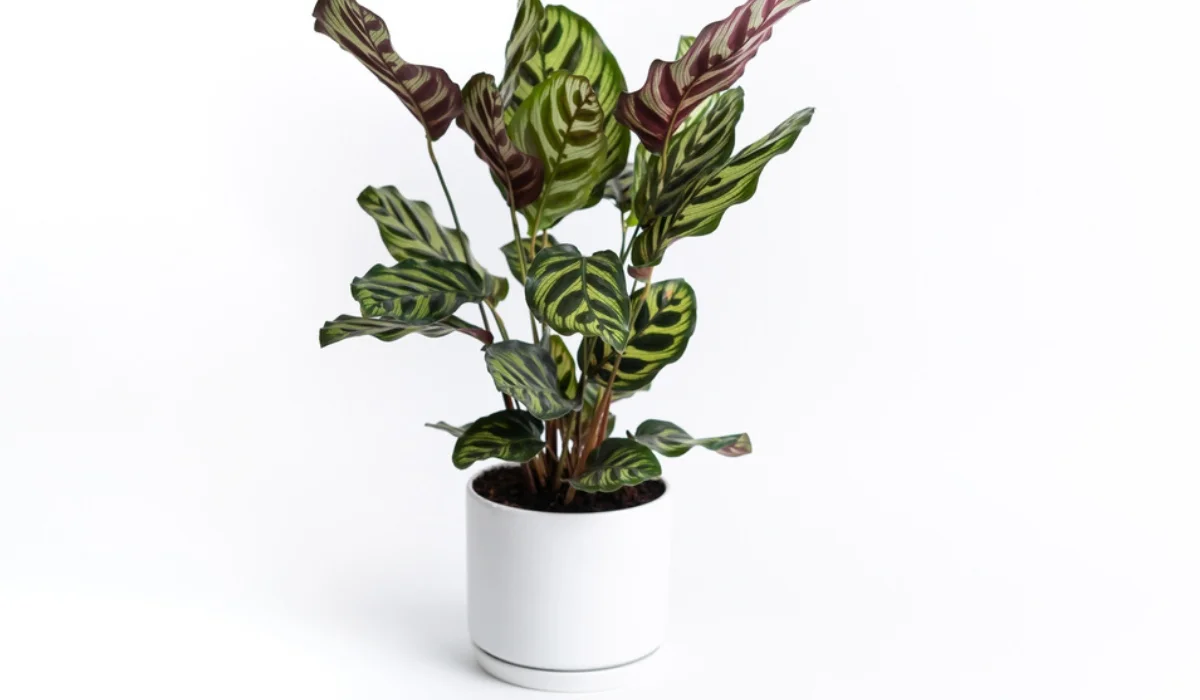The peacock plant, scientifically known as Calathea Makoyana, is a stunning indoor plant that has captured the hearts of home gardeners and plant enthusiasts alike. With its vibrant, patterned leaves resembling the feathers of a peacock, this plant is not just a feast for the eyes but also a wonderful addition to any indoor space. If you’re considering adding a peacock plant to your collection, or if you already have one and need some guidance, you’ve come to the right place. In this blog post, we will explore everything you need to know about caring for this beautiful plant, including light requirements, watering tips, soil preferences, and how to troubleshoot common issues.
What Makes the Peacock Plant Special?
The peacock plant is a member of the Marantaceae family and is known for its dramatic foliage. Its leaves, decorated with intricate patterns of greens, purples, and silvers, can brighten up any room. Unlike many other houseplants, the peacock plant is known for its unique ability to move; its leaves can fold up at night and unfold during the day, a behavior referred to as “nyctinasty.” This dynamic movement adds an extra layer of interest to your indoor garden.

Adding a peacock plant to your home is not just about aesthetics. Houseplants are known to improve air quality, reduce stress, and create a calming environment. With its stunning appearance and numerous benefits, the peacock plant proves to be an excellent choice for any plant lover.
Understanding Peacock Plant Care
Caring for a peacock plant involves understanding its specific needs regarding light, water, soil, and humidity. Here’s a breakdown of what you need to know to ensure your plant thrives.
Light Requirements for the Peacock Plant
One of the most critical aspects of Calathea Makoyana care is providing the right amount of light. The peacock plant thrives in bright, indirect sunlight. Direct sunlight can scorch its delicate leaves, leading to unsightly brown patches.
To create the best environment for your peacock plant, consider placing it near a window that receives filtered light. Sheer curtains can help diffuse the sunlight, allowing your plant to bask in beneficial light without suffering any damage. If you notice your plant stretching or turning towards the light, it may need more indirect sunlight. Conversely, if the leaves begin to pale or develop brown edges, it may be getting too much direct sunlight.
Best Soil for Peacock Plant
Selecting the right soil is essential for the well-being of your peacock plant. The ideal soil mix should be well-draining yet retain moisture to keep the roots happy. A potting mix designed for tropical plants typically works well, but you can also create your own blend.
Consider mixing regular potting soil with peat moss and perlite in equal parts. The peat moss will retain moisture, while the perlite ensures proper drainage, preventing root rot. When repotting, choose a pot with drainage holes to allow excess water to escape easily.
How to Water Calathea Makoyana
Watering your peacock plant correctly is vital for its health. Calathea Makoyana prefers consistently moist soil but should never sit in standing water. To determine when to water, stick your finger about an inch into the soil; if it feels dry, it’s time to give your plant a drink.
It’s essential to use room temperature water, as cold water can shock the roots. Additionally, because these plants are sensitive to chemicals in tap water, consider using distilled or rainwater if possible. When watering, ensure that water seeps through the drainage holes, allowing the roots to absorb what they need.
Humidity and Temperature Considerations
Peacock plants thrive in high humidity environments, making them perfect candidates for bathrooms or kitchens. Ideally, aim to keep humidity levels around 50-60%. If your home is particularly dry, especially during winter months, consider using a humidifier or placing a pebble tray filled with water under the plant pot to increase moisture in the air.
Temperature is another critical factor in keeping your peacock plant healthy. These plants prefer temperatures between 65°F and 80°F (18°C to 27°C). They do not tolerate cold drafts or sudden temperature changes well, so be sure to keep them away from open windows or air conditioning vents.
Common Problems with Peacock Plant
Even with the best care, you may encounter issues with your peacock plant. Being aware of common problems can help you address them promptly.
Brown Tips on Leaves
If you notice brown tips on your peacock plant’s leaves, it could be a sign of low humidity or inconsistent watering. Ensure that your plant is receiving adequate humidity and check that you are watering it correctly. Adjust your care routine accordingly, and you should see improvement over time.
Leaves Curling or Wilting
If the leaves of your peacock plant are curling or drooping, it may be a sign of underwatering or environmental stress. Check the soil moisture and adjust your watering schedule as needed. If the plant is exposed to drafts or excessive heat, consider relocating it to a more stable environment.
Fading Colors
A peacock plant may lose its vibrant colors if it’s not receiving enough light or is exposed to direct sunlight. Assess its location and make adjustments to ensure it’s getting bright, indirect light.
Pruning and Propagation Techniques
Keeping your peacock plant healthy also involves occasional pruning and propagation. Regularly remove any yellow or brown leaves to encourage new growth and maintain aesthetics. Use clean, sharp scissors to prune, ensuring that you don’t damage the healthy parts of the plant.
If you’re interested in propagating your peacock plant, the best method is through division. When repotting your plant, carefully separate the root ball into sections, making sure each division has at least one healthy leaf. Replant these divisions in their own pots with fresh soil.
Fertilizing the Peacock Plant
To keep your peacock plant healthy and thriving, consider fertilizing it during the growing season (spring and summer). A balanced liquid fertilizer diluted to half-strength every 4-6 weeks should suffice. This will provide essential nutrients without overwhelming the plant.
In the fall and winter, reduce fertilization as the plant enters dormancy. Excessive fertilization during this period can lead to nutrient build-up and harm the roots.
The Beauty of the Peacock Plant in Your Home
Incorporating a peacock plant into your home not only enhances your decor but also contributes to your well-being. The lush foliage can create a tranquil atmosphere, improve air quality, and provide a sense of connection to nature. Plus, caring for plants can be a rewarding hobby that nurtures patience and responsibility.
Creating a Stunning Display
To showcase your peacock plant, consider grouping it with other houseplants that share similar care requirements. This not only creates an attractive display but also maintains the humidity levels your peacock plant craves.
Hanging planters, decorative pots, or plant stands can elevate your peacock plant, making it a striking focal point in any room. The more you engage with your plant, the more enjoyment you’ll derive from its beauty.
The peacock plant is a fantastic choice for home gardeners and plant enthusiasts looking to add some flair to their indoor spaces. With its vibrant, eye-catching leaves and unique behaviors, it’s no wonder this plant has become so popular. By following the care tips outlined in this post—such as understanding light requirements, proper watering techniques, and troubleshooting common problems—you can enjoy the beauty of the peacock plant for years to come.
Remember, each plant is unique and may require slight adjustments in care based on its environment. Get to know your peacock plant, and it will reward you with its stunning foliage. If you’re eager to learn more, consider exploring local plant shops or joining online communities where you can share experiences and gain further insights about plant care. Happy planting!





